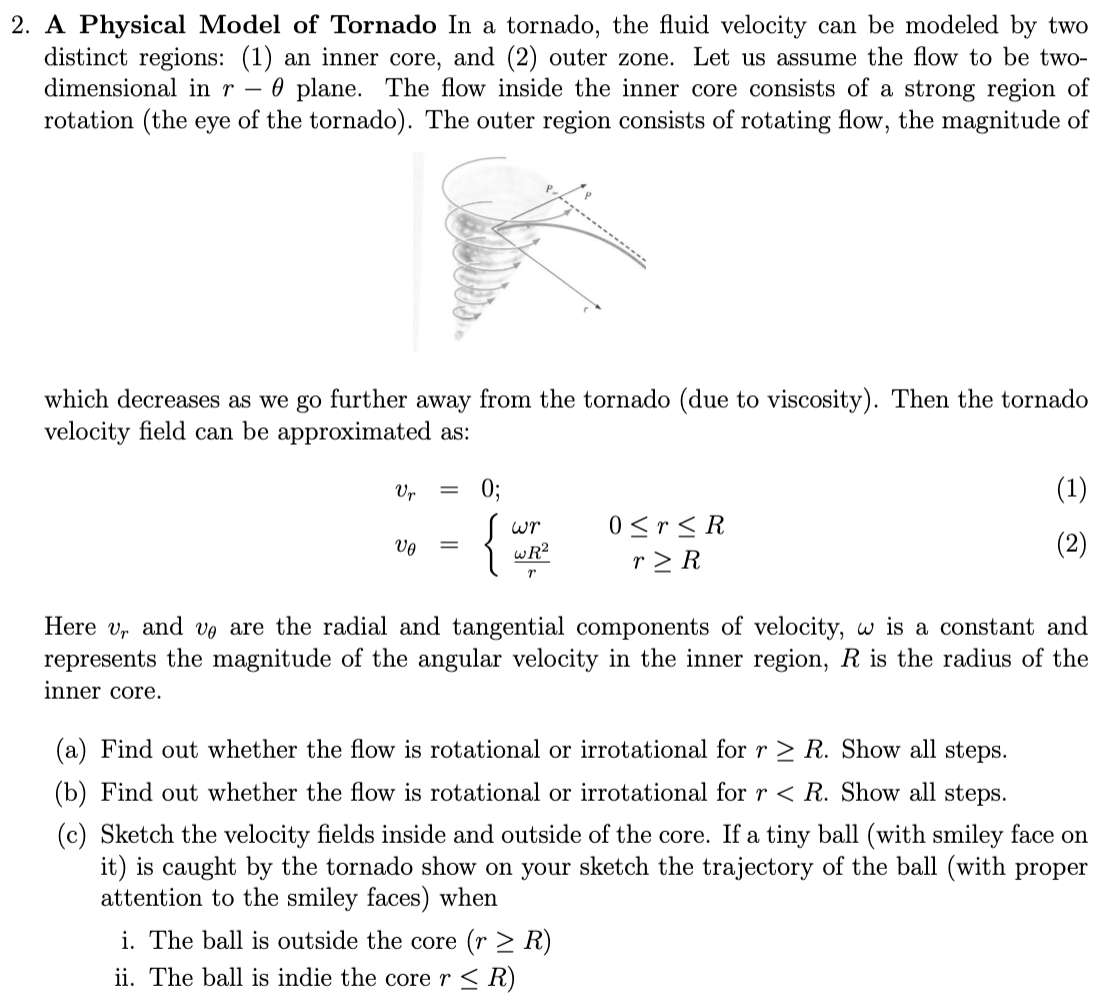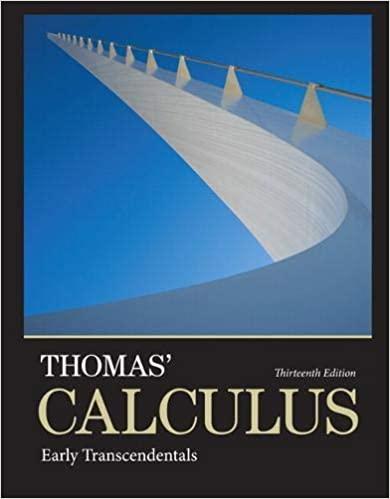Answered step by step
Verified Expert Solution
Question
1 Approved Answer
2. A Physical Model of Tornado In a tornado, the fluid velocity can be modeled by two distinct regions: (1) an inner core, and

2. A Physical Model of Tornado In a tornado, the fluid velocity can be modeled by two distinct regions: (1) an inner core, and (2) outer zone. Let us assume the flow to be two- dimensional in r - 0 plane. The flow inside the inner core consists of a strong region of rotation (the eye of the tornado). The outer region consists of rotating flow, the magnitude of which decreases as we go further away from the tornado (due to viscosity). Then the tornado velocity field can be approximated as: Vr = 0; = WR " 0 r R r > R (1) Here v, and ve are the radial and tangential components of velocity, w is a constant and represents the magnitude of the angular velocity in the inner region, R is the radius of the inner core. (a) Find out whether the flow is rotational or irrotational for r > R. Show all steps. (b) Find out whether the flow is rotational or irrotational for r < R. Show all steps. (c) Sketch the velocity fields inside and outside of the core. If a tiny ball (with smiley face on it) is caught by the tornado show on your sketch the trajectory of the ball (with proper attention to the smiley faces) when i. The ball is outside the core (r R) ii. The ball is indie the core rR)
Step by Step Solution
There are 3 Steps involved in it
Step: 1

Get Instant Access to Expert-Tailored Solutions
See step-by-step solutions with expert insights and AI powered tools for academic success
Step: 2

Step: 3

Ace Your Homework with AI
Get the answers you need in no time with our AI-driven, step-by-step assistance
Get Started


